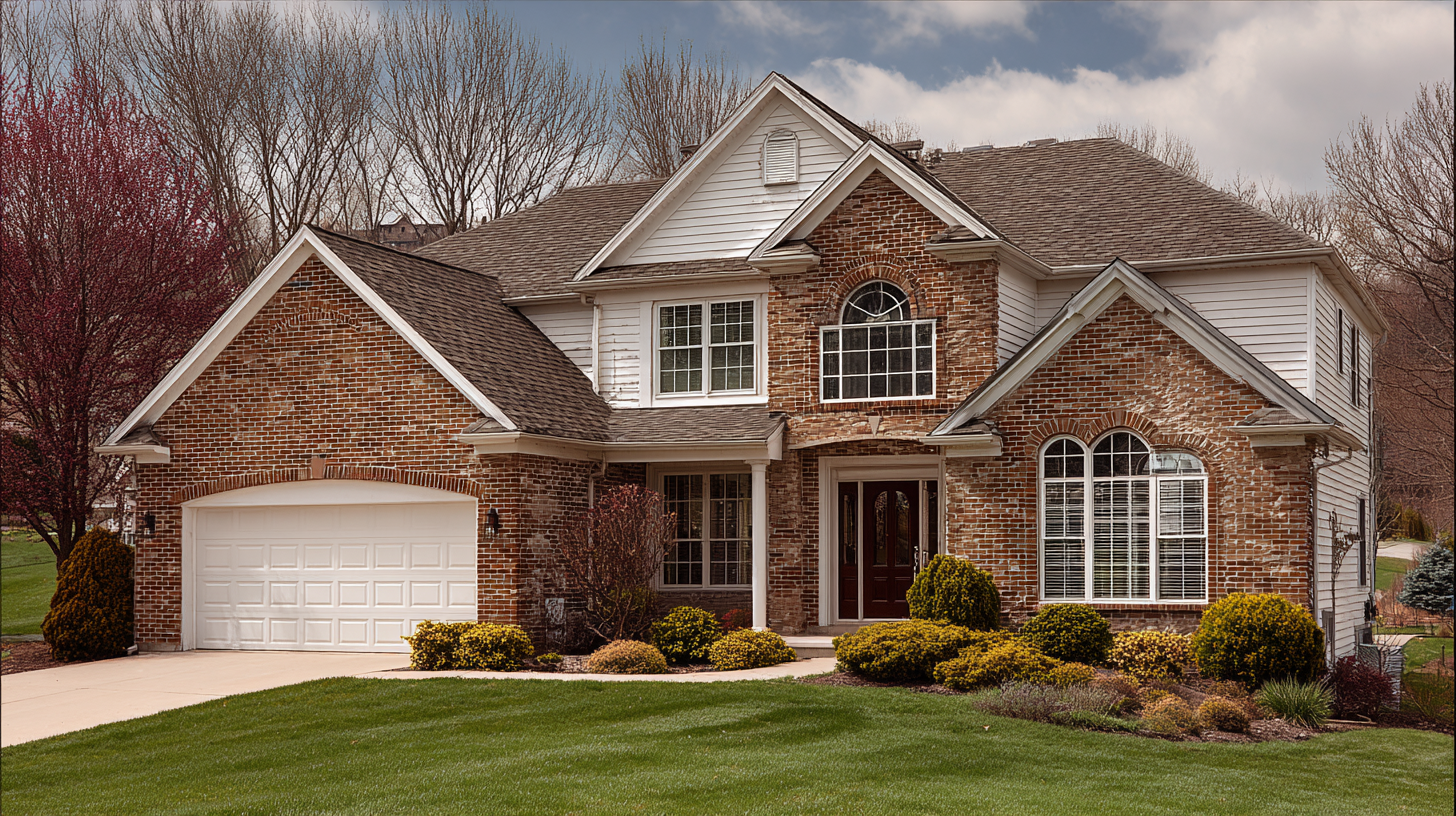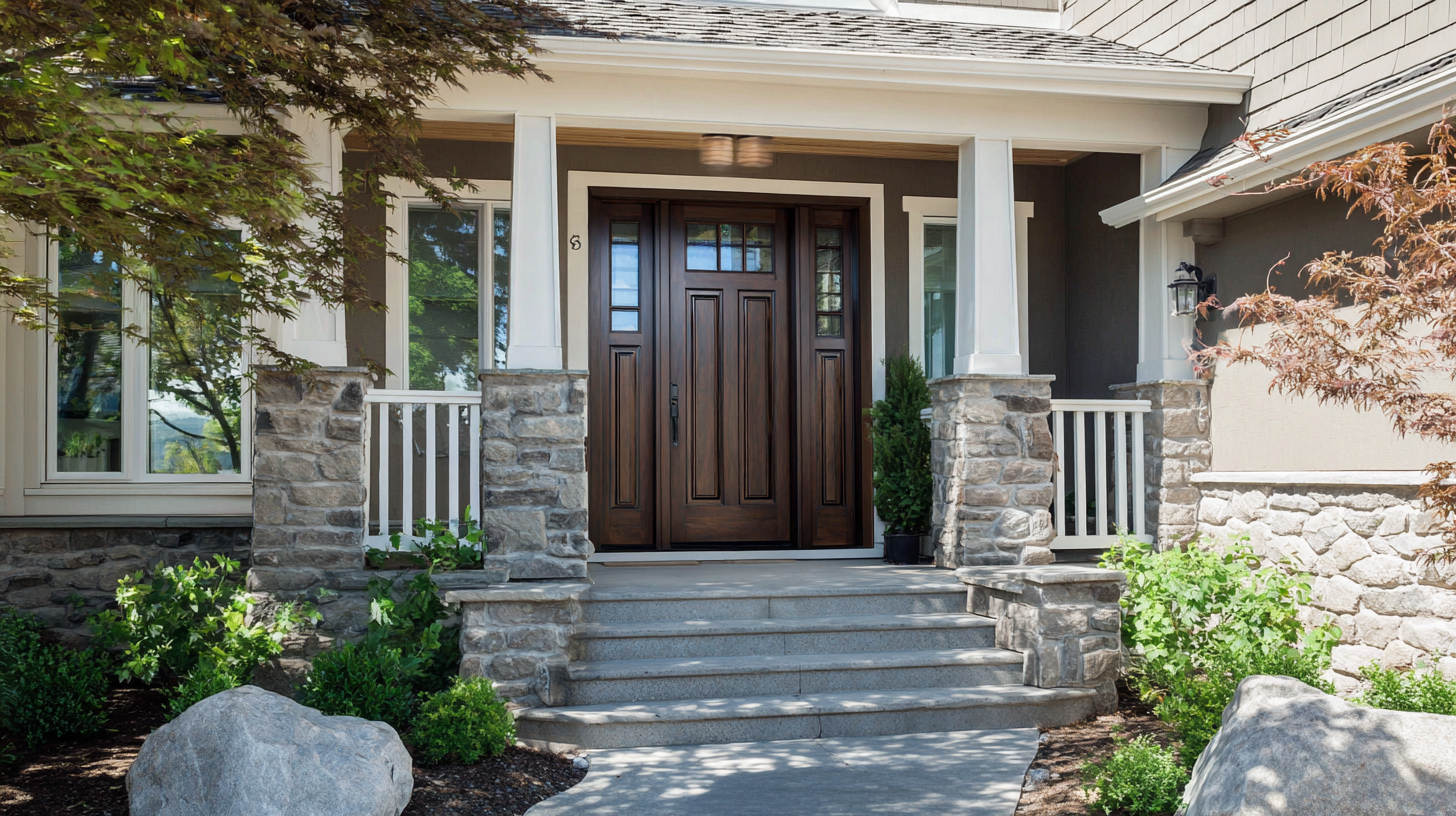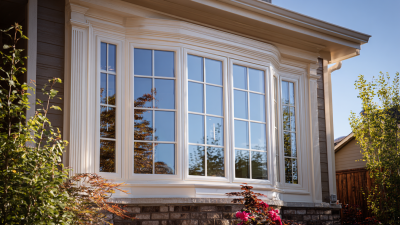Enhancing Home Security: The Impact of Quality Residential Doors and Windows on Burglary Rates
In recent years, the importance of enhancing home security has come under increasing scrutiny, particularly regarding the role of residential doors and windows in preventing burglaries. According to the Bureau of Justice Statistics, over 2.5 million home burglaries occur each year in the United States, with nearly 70% of these break-ins involving entry through doors or windows. A study conducted by the Home Security Research Center indicates that homes equipped with quality residential doors and windows can reduce the likelihood of burglary by up to 50%. These findings highlight the critical need for homeowners to invest in durable, secure, and reliable entry points, as they serve as the first line of defense against intruders. By understanding how residential doors and windows can significantly impact burglary rates, homeowners can make informed decisions to protect their property and enhance their overall safety.

The Role of High-Quality Doors in Preventing Break-Ins and Enhancing Safety
High-quality doors play a crucial role in enhancing home security and preventing break-ins. According to a report from the Department of Justice, nearly 30% of burglaries involve an unlawful entry through a door, highlighting that the quality and durability of doors can significantly impact burglary rates. Upgrading to solid wood or reinforced steel doors not only deters potential intruders but also minimizes the risk of forced entry. A study from the National Institute of Justice indicates that homes equipped with solid-core doors are 14 times less likely to be burgled compared to those with standard hollow-core doors.
In addition to door quality, the installation of high-security locks further enhances protection. Research by the Security Industry Association shows that homes with deadbolt locks are 15 times less likely to be broken into than those without. The combination of quality doors, proper locking mechanisms, and advanced security features such as smart locks can create a formidable barrier against criminal activity. To maximize safety, homeowners should consider door upgrades as an essential investment in their overall security strategy, with data clearly illustrating the relationship between door quality and burglary prevention.

Top 5 Window Features That Deter Burglars and Improve Home Security
When it comes to home security, the quality of windows plays a crucial role in deterring burglars. Research indicates that homes with high-security windows can reduce the likelihood of a break-in by up to 60%. Burglars are known to look for vulnerabilities, and standard windows are often a weak point. The top five window features that enhance security include laminated glass, which is harder to break; secure locking mechanisms that prevent forced entry; window sensors that alert homeowners of unauthorized openings; window films that reinforce glass; and design elements like window locks positioned high out of reach.
In addition to fortified windows, understanding the tactics employed by burglars can further inform homeowners on how to enhance their security measures. Studies reveal that experience plays a significant role in burglary raids; often, thieves target homes based on observable signs, such as unkempt lawns or mail piling up, indicating that residents may be away. Implementing features such as robust locks and alarm systems can make your home less appealing to intruders. By prioritizing these security-enhancing window features, homeowners can proactively deter crime and significantly lower their risk of burglary.
Top 5 Window Features That Deter Burglars and Improve Home Security
This chart illustrates the effectiveness of various window features in deterring burglars, based on statistical analysis of burglary rates. Higher percentages indicate stronger deterrence.
Comparative Analysis: Standard vs. Reinforced Residential Entry Points
The choice between standard and reinforced residential entry points can significantly influence burglary rates. Standard doors and windows, while often aesthetically pleasing and cost-effective, typically lack the robust security features required to deter determined intruders. These common entry points are often made from weaker materials, leaving homes vulnerable to forced entry. As studies show, homes with standard fixtures are more frequently targeted, leading to an increased likelihood of break-ins.
On the other hand, reinforced entry points offer a compelling defense against burglaries. These structures are designed with stronger materials, advanced locking mechanisms, and improved installation techniques that enhance their durability and resistance to forced entry. Homeowners who invest in reinforced doors and windows often experience a marked decrease in burglary attempts. Additionally, modern reinforced options can blend seamlessly with the home’s design while providing an added layer of security, making them a wise investment for both safety and peace of mind. The comparative analysis clearly highlights the critical role that the quality of entry points plays in safeguarding residential properties.
Enhancing Home Security: The Impact of Quality Residential Doors and Windows on Burglary Rates
| Entry Point Type | Break-in Rate (%) | Average Cost ($) | Insurance Rate Discount (%) | Durability Rating (Years) |
|---|---|---|---|---|
| Standard Door | 3.5% | 400 | 5% | 10 |
| Reinforced Door | 1.2% | 900 | 15% | 20 |
| Standard Window | 4.0% | 300 | 5% | 8 |
| Reinforced Window | 1.5% | 600 | 10% | 15 |
Case Studies: How Upgrading Doors and Windows Reduced Crime Rates
Upgrading residential doors and windows has proven to be an effective strategy in reducing burglary rates, as highlighted by various case studies. For instance, a 2021 report from the Security Industry Association (SIA) noted that homes with high-quality, reinforced doors experienced a 40% decrease in break-ins compared to those with standard entry points. Similarly, the National Institute of Justice found that double-pane, shatter-resistant windows deterred criminal activity, lowering burglary incidents by approximately 30% in neighborhoods that implemented these upgrades.
To enhance your home's security, consider investing in doors made from solid materials such as steel or fiberglass, which are less susceptible to forced entry. Additionally, installing smart locks or deadbolts can significantly increase your home’s defense. According to a study by the Bureau of Justice Statistics, homes with visible security upgrades not only feel safer to residents but also discourage potential intruders.
**Tips:** When selecting doors and windows, look for those that meet or exceed the standards set by the American National Standards Institute (ANSI). Ensure that all entry points are well-lit and utilize motion sensor lighting to further deter criminal activities. Regular maintenance of these installations also plays a crucial role in their effectiveness; ensuring they are functionally sound will provide peace of mind and increased security.

Expert Tips on Choosing the Best Security Features for Your Home's Openings
When it comes to enhancing home security, selecting quality residential doors and windows is crucial. According to a report by the Bureau of Justice Statistics, approximately 65% of all burglaries involve forced entry through doors or windows. This alarming statistic underscores the importance of choosing the right security features. Homeowners should consider reinforced doors made of solid wood or fiberglass, which are much more resistant to break-ins compared to hollow-core doors. Additionally, look for models that come with dual locking mechanisms for added security.
Windows are another critical area for potential entry points. Research from the International Security Industry Council indicates that more than 30% of residential break-ins occur through unlocked or inadequately secured windows. To prevent this, homeowners should invest in double-paned tempered glass and window locks that meet or exceed industry standards. Consider installing window film, which can strengthen glass and make it harder for intruders to gain access. By prioritizing these quality features in your home’s openings, you can significantly reduce the likelihood of a burglary and enhance your overall peace of mind.
Related Posts
-

Why Choosing the Right Home Doors Can Transform Your Living Space
-

The Ultimate Guide to Choosing Quality Windows for Your Home Efficiency
-

Exploring the Benefits of Using Home Glass Solutions for Sustainable Living
-

Exploring Home Glass Innovations at the 138th Canton Fair 2025: Trends and Market Insights
-

The Ultimate Guide to Choosing Quality Windows for Energy Efficiency and Style
-

The Benefits of Choosing Glass Doors for Modern Home Design
- © Copyright
- Andy's Glass & Window Company
- All Rights Reserved
- Blog